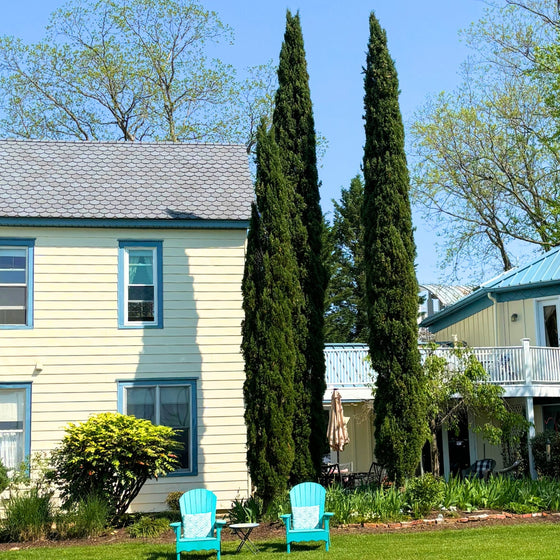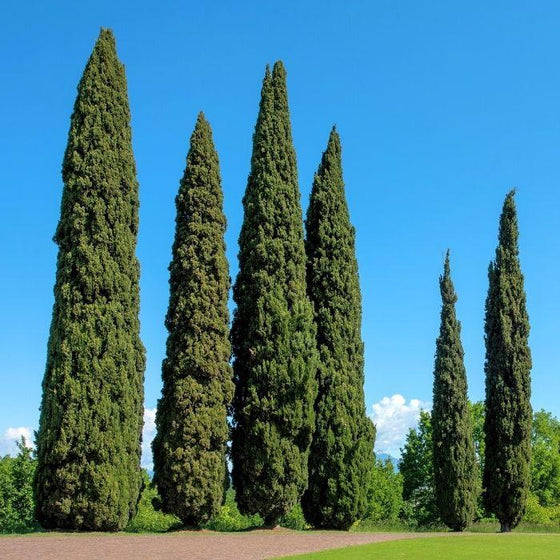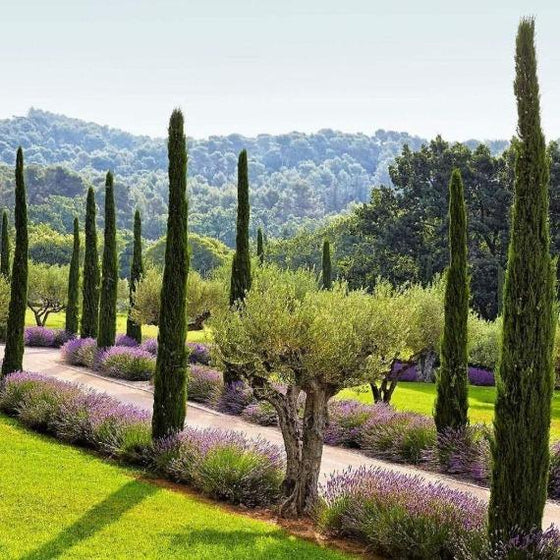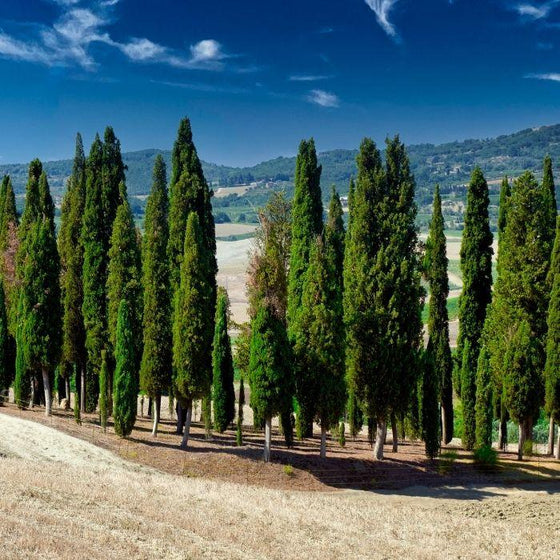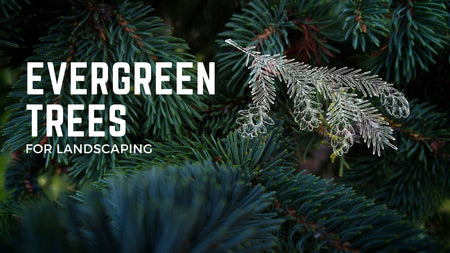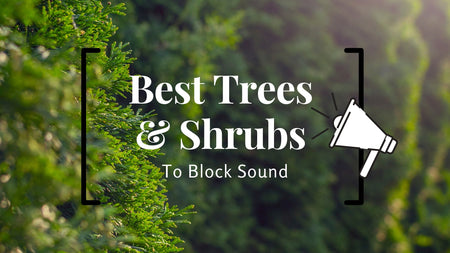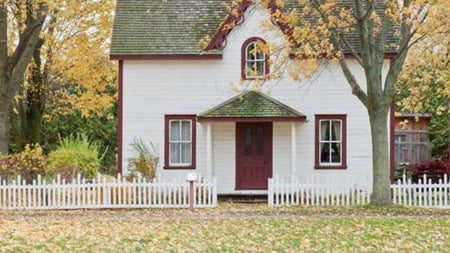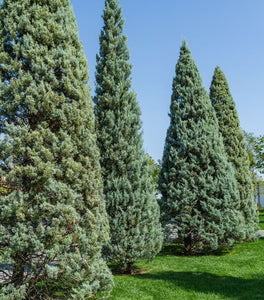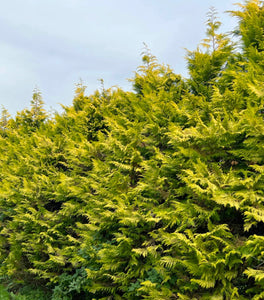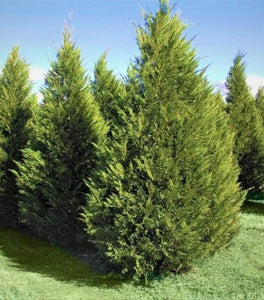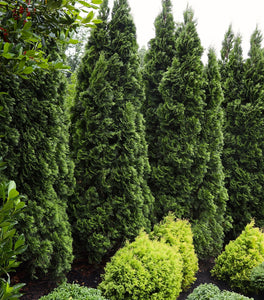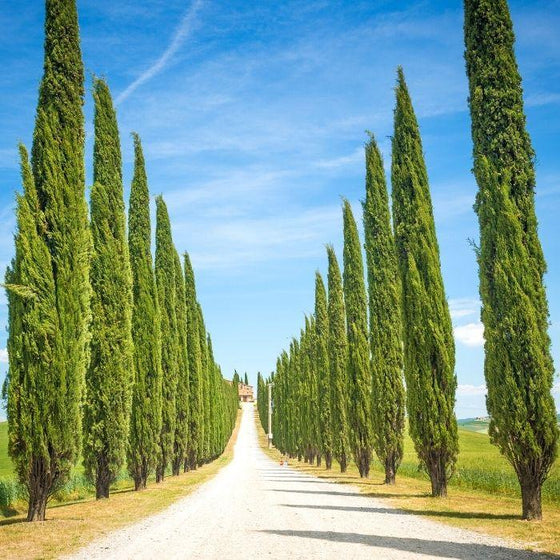
Images Depict Mature Plants
Elegant, Evergreen Height for Mediterranean-Inspired Landscapes
Iconic Columnar Beauty
The Italian Cypress (Cupressus sempervirens) brings timeless elegance and vertical structure to landscapes with its narrow, columnar shape and rich green foliage. Instantly recognizable in Mediterranean gardens and Tuscan villas, these stately evergreens provide a formal, architectural look that draws the eye upward and enhances curb appeal.
Space-Saving and Evergreen Year-Round
Growing 30–40 feet tall and just 3–5 feet wide, Italian Cypress trees offer impressive height without taking up much ground space — perfect for lining driveways, framing entrances, or forming tall, narrow privacy screens. Their dense, dark green foliage remains vibrant all year, providing texture and movement even during the winter months.
Drought-Tolerant and Low-Maintenance
Once established, Italian Cypress trees are highly drought-tolerant and thrive in well-draining soil with full sun exposure. Their upright habit requires minimal pruning and is resistant to most common pests and diseases. These evergreens are a long-lived investment that continues to add elegance and structure for years to come.
Perfect for Formal Gardens and Warm Climates
Ideal for zones 7–10, Italian Cypress brings old-world sophistication to modern landscapes. Whether used as stately sentinels along a property line or as single specimen trees, they create instant architectural drama. Pair them with boxwoods, roses, or olive trees for a refined Mediterranean garden design.
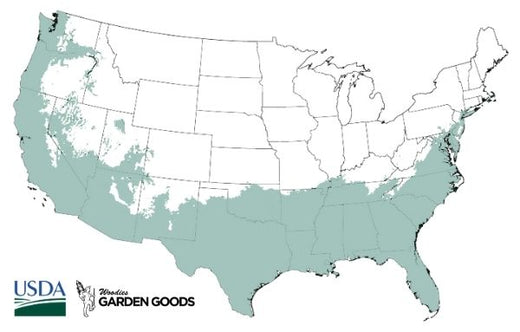
| Botanical Name | Cupressus sempervirens |
|---|---|
| Hardiness Zone: | 7-10 |
| Mature Height: | 30 to 40 Feet |
| Mature Width: | 3 to 5 Feet |
| Sunlight: | Full sun |
| Soil: | Well-drained, moderately fertile soil |
| Water | Low once established |
| Resistance | Drought-tolerant, deer-resistant |
| Landscape Uses | Privacy screens, driveways, entrances, Mediterranean gardens |
How to Care for Italian Cypress
Before you buy an Italian Cypress Tree, make sure to read about the recommended care instructions that are recommended to keep this plant healthy and thriving.
How should I plant Italian Cypress?
Choose a sunny, well-drained site where these tall evergreens can reach full height without obstruction. Dig a hole twice as wide as the root ball and just as deep, ensuring the crown sits level with the soil surface. Mix native soil with compost to enhance drainage and structure, then backfill and water deeply to settle the roots. Staking may be helpful during the first year to support upright growth in windy areas. For rows or privacy screens, space trees 3–5 feet apart depending on how dense you want the screen to be. Closer spacing produces an immediate solid wall of green, while wider spacing allows for more airflow and individual tree definition. Add mulch around the base to retain moisture, but avoid piling it against the trunk.
How often should I water Italian Cypress after planting?
During the first growing season, water deeply once or twice per week to help establish strong roots. Consistent watering is key during this period — ensure the soil is moist but not soggy. After establishment, reduce watering frequency as the trees become drought-tolerant, requiring only occasional deep watering during long dry spells. If planted in clay or poorly draining soil, avoid frequent shallow watering, which can promote root rot. Instead, water less often but more deeply to encourage deep root growth. Adding drip irrigation or soaker hoses ensures steady moisture while keeping foliage dry to prevent fungal issues.
When should I fertilize Italian Cypress?
Feed Italian Cypress in early spring with a slow-release, balanced fertilizer such as 10-10-10 to promote steady, uniform growth. Young trees especially benefit from a spring feeding as they develop their vertical structure and root system. In nutrient-rich or established soils, one feeding per year is sufficient. For an organic option, apply compost or aged manure around the base each spring to improve soil health and water retention. Avoid overfertilizing, as this can lead to excessive top growth that weakens structure.

When and how should I prune Italian Cypress?
Italian Cypress requires minimal pruning due to its naturally columnar growth. In late winter or early spring, remove any dead or damaged branches using clean, sharp pruners. Avoid cutting into the woody trunk, as these trees do not regenerate from old wood. To maintain a uniform look, light trimming of outer shoots can help define shape and encourage density. For hedges or privacy screens, prune just once a year to preserve their sleek, upright silhouette.

